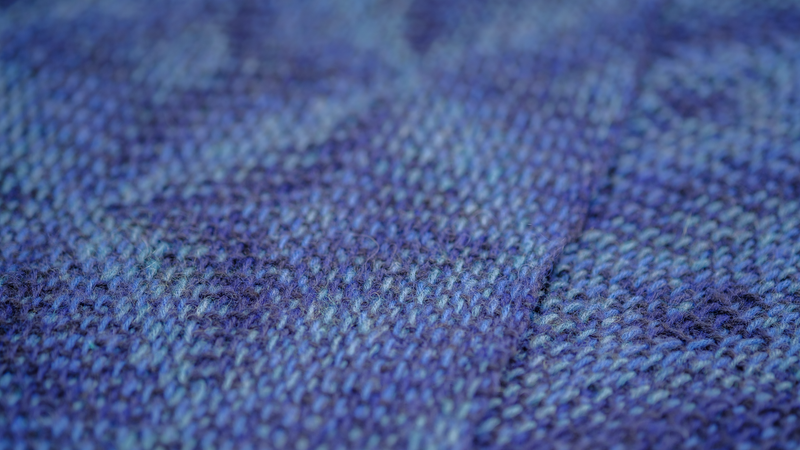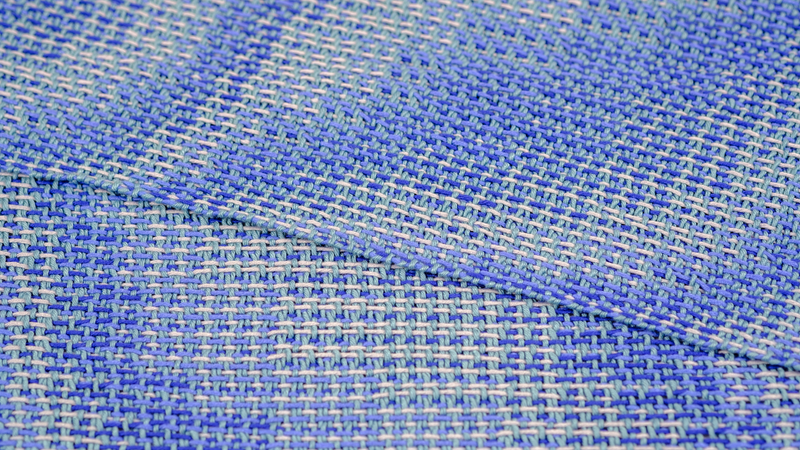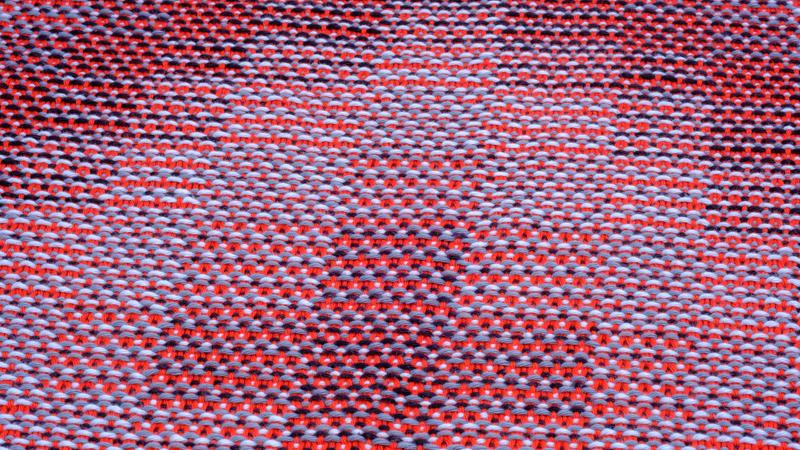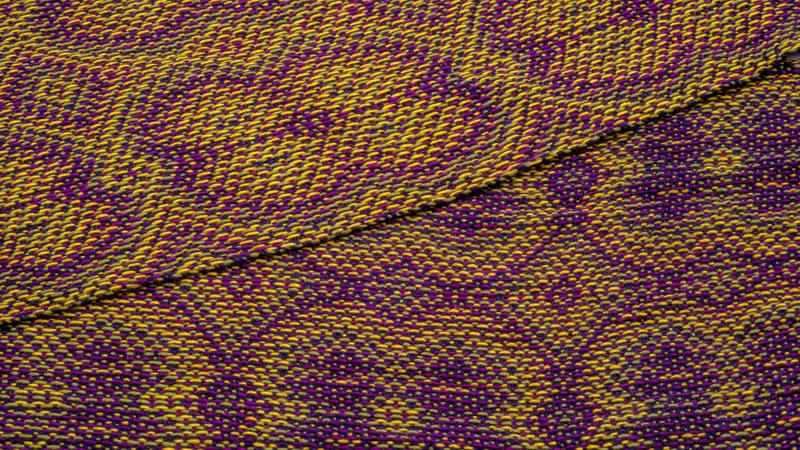What do you do when you want to make a shawl in shades of blue? There are many possible routes to take, but I decided on revisiting monochrome Corris. It is a great way to achieve a subtle interplay of colors.
A Woven World – corris
by Barbara Goudsmit
My recent discovery of the joy of network treadling made me look at Corris designs in a new light. Up until now, I wove the Corris effect by inserting a tabby in the design line. Although this gives lovely results, obtaining a treadling sequence with the same number of threads as the threading sequence can be challenging. Network treadling is another way to transform a design line into a treadling sequence — no tabby required. This makes it a lot easier to align the threading and treadling sequence. So, I decided to put Corris on a network.
The Corris train keeps moving steadily. I tried a symmetric version of Corris and applied the Corris effect to a monochrome warp . Next stop: a warp with six instead of three colors. I wondered what the Corris effect would bring if I turned the color volume up, so I took a dive in my rainbow colored bamboo yarn stash to try out multicolored Corris.
The Corris effect is a great way to achieve a beautiful interplay of colors. Since I love color, I was naturally drawn towards making multiple-colored designs when I first started playing around with the Corris effect. I combined three bright colors in the warp with a background color as weft. After some time, I wondered whether the Corris effect could also be used with a more monochromatic warp. It turns out that Corris gives equally interesting results when toning the warp color contrast way down.
The first shawls I made using the Corris effect had wavelike patterns. After these more abstract experiments, I wanted to apply the Corris effect to patterns with motifs such as flowers and stars. In my personal opinion, these motifs look best when they have a certain symmetry to them. However, when applying the Corris effect to a symmetric twill motif, the symmetry gets lost. To overcome this, I changed the rules of the Corris effect up a bit.




